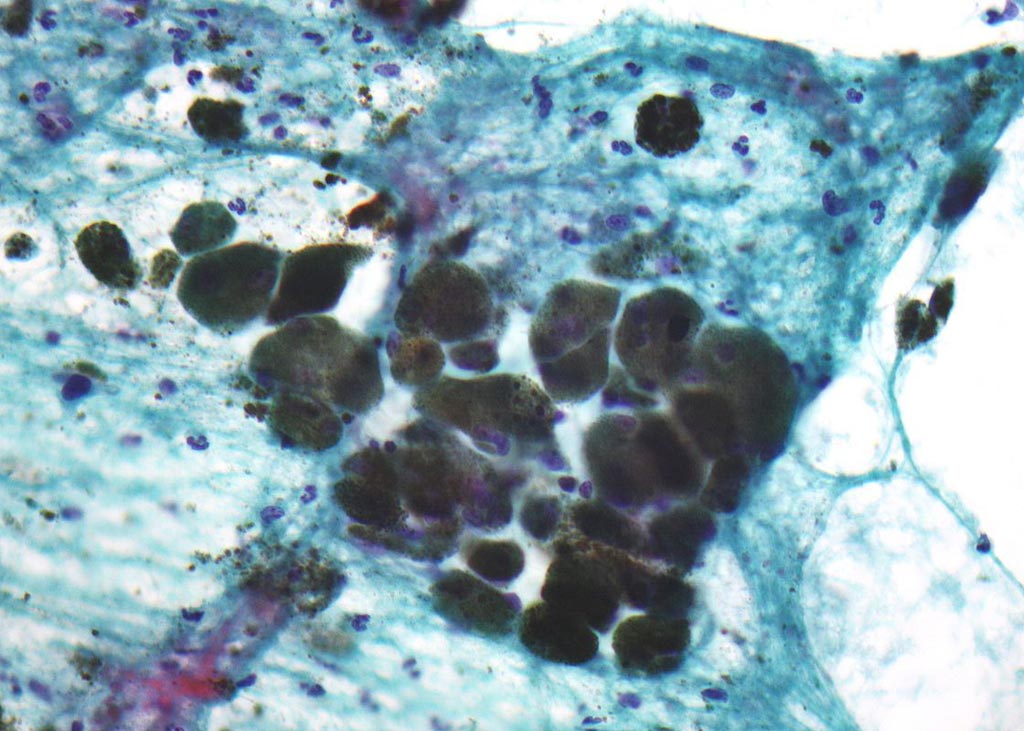Light-Enhanced Microneedle Vaccine Prevents Melanoma Development
By LabMedica International staff writers
Posted on 20 Nov 2017
A novel immunotherapeutic vaccine prevented the development of skin cancer in a mouse model by exploiting the ability of the protein melanin to transform light energy into heat.Posted on 20 Nov 2017
Melanin is capable of transforming 99.9% of the absorbed sunlight energy into heat, which reduces the risk of skin cancer. In order to exploit this property, investigators at the University of North Carolina (Chapel Hill, USA) developed a melanin-mediated cancer immunotherapy strategy using a transdermal microneedle patch. A whole cell lysate prepared from cells of the B16F10 melanoma was augmented with melanin, and this mixture was loaded into polymeric microneedles that allowed sustained release of the lysate upon insertion into the skin.

Image: Melanin protein (light refracting granular material at the center of the photomicrograph) in a pigmented melanoma (Photo courtesy of Wikimedia Commons).
The investigators used near-infrared light (IR) irradiation to induce the melanin in the patch to generate heat, which promoted tumor-antigen uptake by dendritic cells, and led to enhanced antitumor vaccination.
In a paper published in the November 10, 2017, online edition of the journal Science Immunology, the investigators reported that they divided a population of mice into three groups: one group was treated with the patch and was exposed to IR light; one group was treated with the patch, but was not exposed to IR light; and one group was treated with a patch that did not contain the cell lysate-melanin mixture. Ten days after initiation of the patch treatment, the mice were injected with active melanoma cells. Within one month, all of the mice that had received the empty patch died from melanoma. The lysate patch without exposure to near IR light was only slightly protective and only 13% of the mice survived. In contrast, 100% of the mice that had been treated with the active lysate patch and IR light survived after two months, and no tumors were detected in 87% of the animals. The enhanced results generated by exposure to IR light was attributed to local heating that caused formation of a fever-like environment in the skin, which promoted release of lysate from the microneedles, effectively attracting and activating immune cells.
"Melanin is a natural pigment that can efficiently transform absorbed sunlight energy into heat," said senior author Dr. Zhen Gu, professor of medicine at the University of North Carolina. "We demonstrated that melanin, which is found at high levels in melanoma, can actually be used to help treat melanoma. We do this by shining near infrared (IR) light on a therapeutic skin patch, which promotes the systemic immune response that fights cancer. These results are encouraging, but we are in the early stages of development. The next step would be a large animal study to further evaluate the safety and efficacy of the technique. And while it is much too early to estimate cost, we think that the treatment could be scaled up and would be affordable."
Related Links:
University of North Carolina













